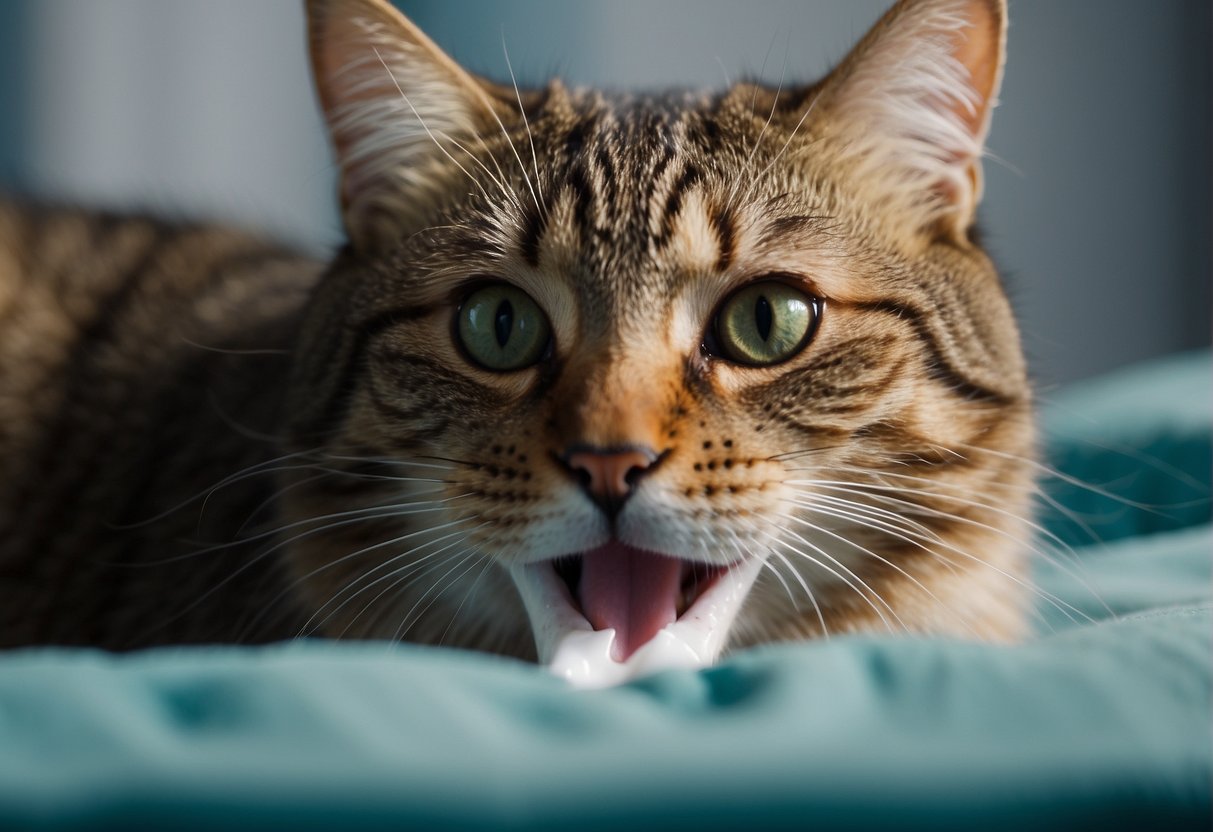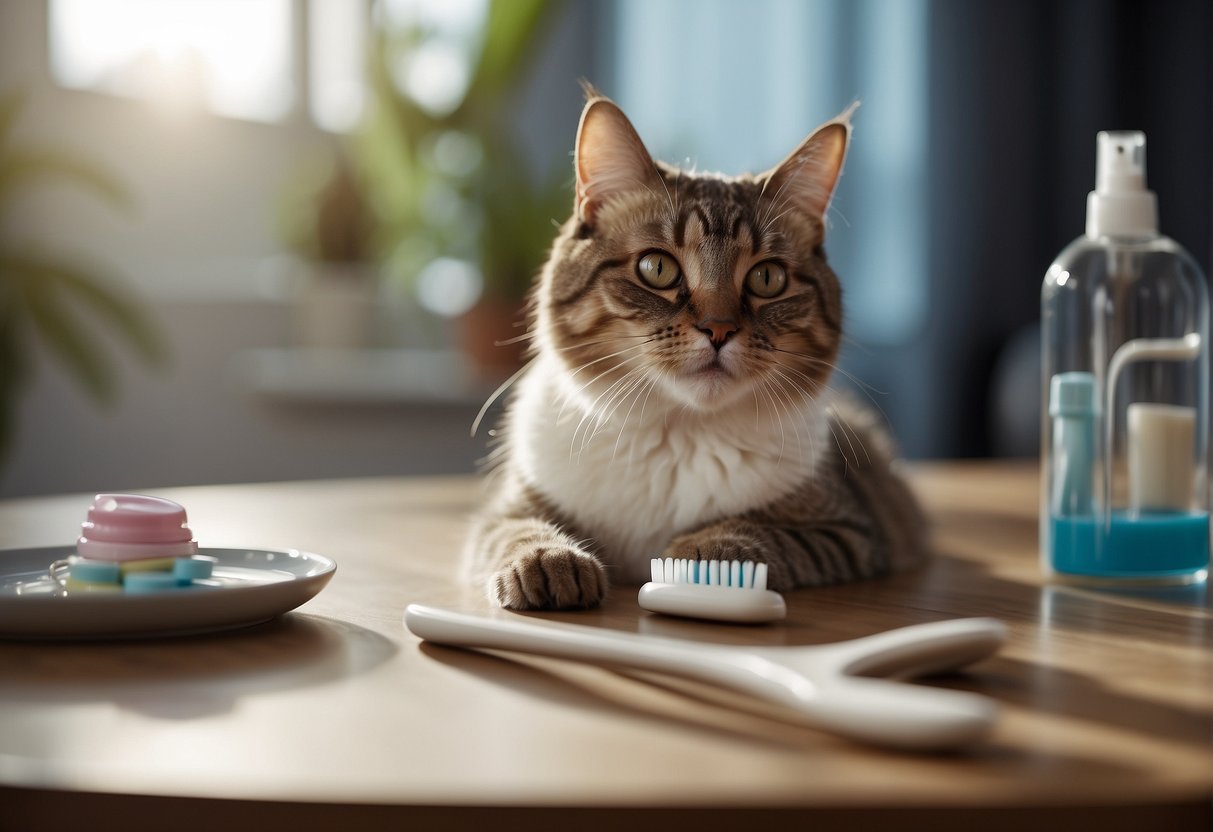Cleaning your cat’s teeth is an essential part of their overall health care regime.
Similar to humans, good oral hygiene for cats can prevent a multitude of dental issues and contribute to their overall well-being. Poor dental care can lead to plaque buildup, gum disease, and potentially more serious health conditions involving the heart, liver, and kidneys.

Starting dental care early with your cat can make the process easier for both of you. For example, using a cat-specific toothbrush and toothpaste, you can introduce your pet to the taste and sensation of brushing.
Begin with letting your cat lick the toothpaste off the brush to get accustomed to its presence and taste. As they become comfortable, you can gently lift their lip to brush the canine teeth, using soft, circular motions at a forty-five-degree angle to the gumline.
This method, often advised by veterinarians, helps in minimizing the risk of gum irritation while effectively cleaning the teeth.
Remember, like any aspect of caring for your cat, patience, and positive reinforcement are key. Rewarding your feline friend with praise and treats after a brushing session can help establish a positive association with the routine.
Preparing for Teeth Cleaning

Before you dive into cleaning your cat’s teeth, ensuring you have the right tools and setting the stage for a stress-free experience are crucial steps. These preparations can make the difference between a smooth cleaning session and a fussy feline.
Choosing the Right Tools
The foundation of effective feline dental care starts with selecting appropriate cleaning tools. Here’s a quick list to help you:
- Toothbrush: Opt for a soft-bristled cat toothbrush. These are smaller and angled to comfortably fit in your cat’s mouth.
- Finger Brushes: If your cat isn’t comfortable with a regular toothbrush, consider a finger brush, which can be more intuitive for you to use.
- Gauze: As a beginner-friendly option, wrap a piece of gauze around your finger to gently wipe the teeth.
- Flavored Toothpaste: Never use human toothpaste. Select a feline-friendly flavored toothpaste to make the experience more enjoyable for your cat.
- Dental Diets: While not a tool, dental diets can support oral health between cleanings. These are formulated to reduce plaque and tartar buildup.
Creating a Calm Environment
Cats are sensitive creatures and can easily pick up on stress, so it’s imperative to create a serene environment. Here’s how to set up for success:
- Choose a Quiet Space: Find a spot away from loud noises and distractions.
- Establish a Routine: Regularly scheduled cleanings can help your cat know what to expect.
- Comfort: Have your cat’s favorite blanket or bed nearby for immediate comfort after cleaning.
- Rewards: Treats or playtime after cleanings can positively reinforce the experience.
Executing the Cleaning Process
Taking care of your cat’s dental health is crucial, and the right approach to brushing can prevent issues like gingivitis and toothache. Consistency and gentleness are key.
Step-by-Step Brushing Technique
- Gather the Right Tools: Use a toothbrush designed for cats and cat-specific toothpaste.
- Acclimatization: Let your cat taste the toothpaste from your finger.
- Gradual Introduction: Slowly introduce the toothbrush, allowing your cat to lick toothpaste off of it.
- Proper Brushing: With patience and care, hold the brush at a 45-degree angle to the gum line and clean using a gentle circular motion. Aim to brush daily, covering all teeth with special attention to the back molars.
- Duration: Try to brush for at least 2 minutes, but initially, even a shorter period is better than not brushing at all.
- Praise and Treats: Reward your cat with their favorite treat or playtime to associate brushing with a positive experience.
Addressing Dental Pain and Discomfort
- Recognizing Pain: If your cat resists brushing or shows signs of discomfort, they may have dental issues.
- Preventive Measures: Use dental treats and toys to help reduce plaque and massage gums.
- Professional Evaluation: Schedule regular veterinary cleanings and check-ups to catch and address any dental problems early on.
- Sensitive Approach: If you detect toothache or gingivitis, consult your vet. They may recommend special treatments or adjustments to your brushing routine to manage pain.
Maintaining Dental Hygiene Between Cleanings
Keeping your cat’s teeth clean involves more than the occasional brushing. Let’s explore how a well-chosen diet and regular professional care can play a crucial role in your feline’s oral health.
The Role of Diet and Treats
Your cat’s daily diet can significantly impact their dental hygiene. Feeding them kibble specially formulated to reduce plaque and tartar buildup is a smart choice. These kibbles are often designed to be larger and have a harder texture, requiring your cat to chew thoroughly, which helps scrub their teeth clean.
Dental chews and treats fortified with enzymes that promote oral health are great supplementary options. Providing these treats not only satisfies your cat’s palate but also keeps their teeth cleaner. Here’s how you can incorporate these into your cat’s routine:
- Morning/Evening: Give your cat a dental chew after their meal.
- Throughout the Day: Offer toys that massage the gums and clean the teeth while they play.
Professional Care and Routine Checkups
While home care is important, nothing replaces professional cleaning and annual checkups conducted by a veterinarian. These checkups can catch early signs of dental issues before they turn into costly problems.
At a professional cleaning, your vet will remove plaque and tartar, even from below the gum line. It’s useful to know what to expect:
- Pre-Cleaning: The vet will usually perform a pre-cleaning exam.
- Cleaning Process: Using ultrasonic scalers, the vet cleans each tooth meticulously.
- Post-Cleaning: Teeth are polished, and any necessary treatments for dental issues are addressed.

My name is James, and welcome to FAQCats!
Along with our team of cat owners, expert pet enthusiasts, and pet professionals, we aim to write engaging helpful, engaging content about cats. At FAQCats we strive to provide content that’s accurate and fun to read. Our team writes about everything related to cats; even the most complex of topics. Through extensive research and caring for our own fur-pals, we’re able to provide something cat owners worldwide will love. Have a look around, and leave us feedback anytime!

